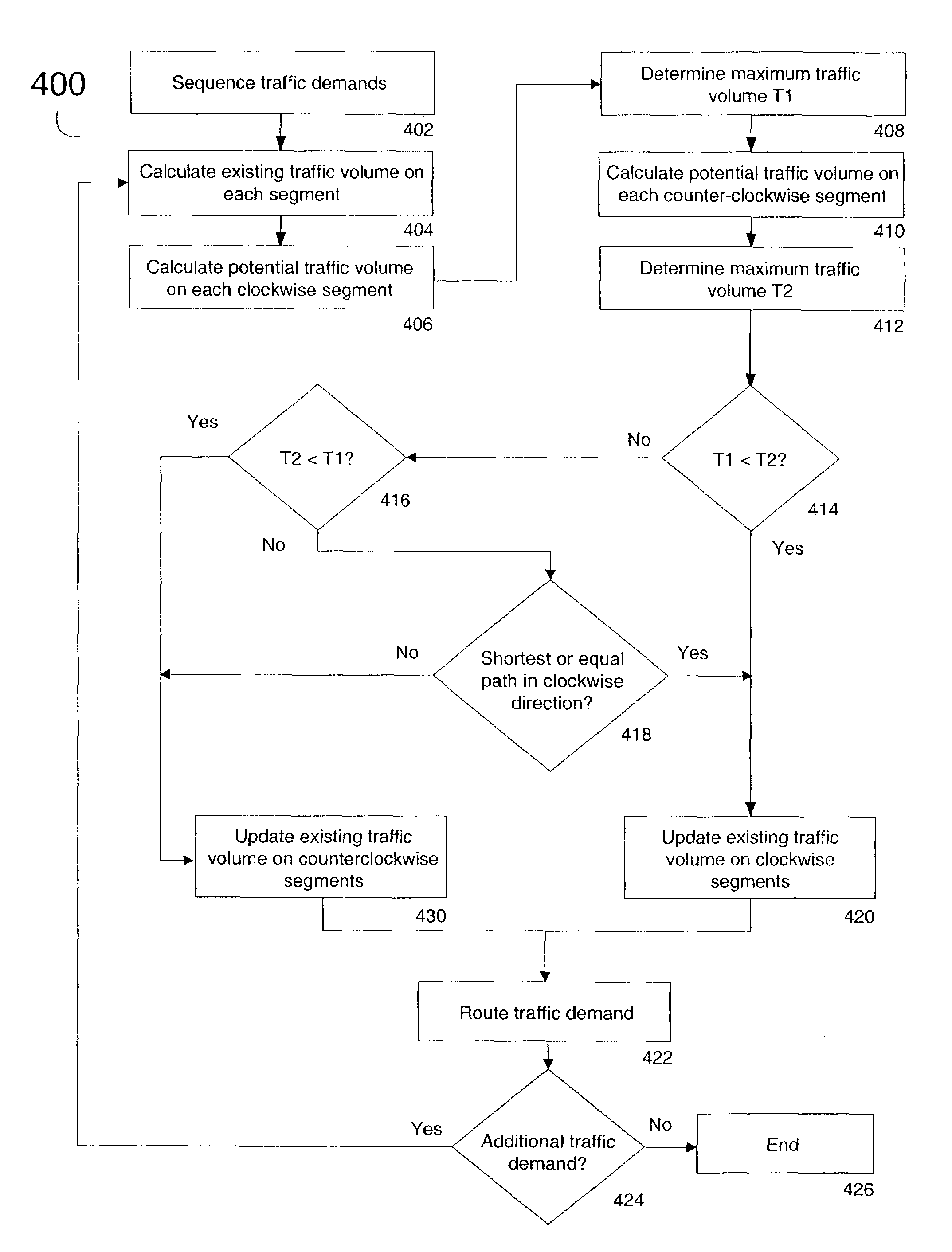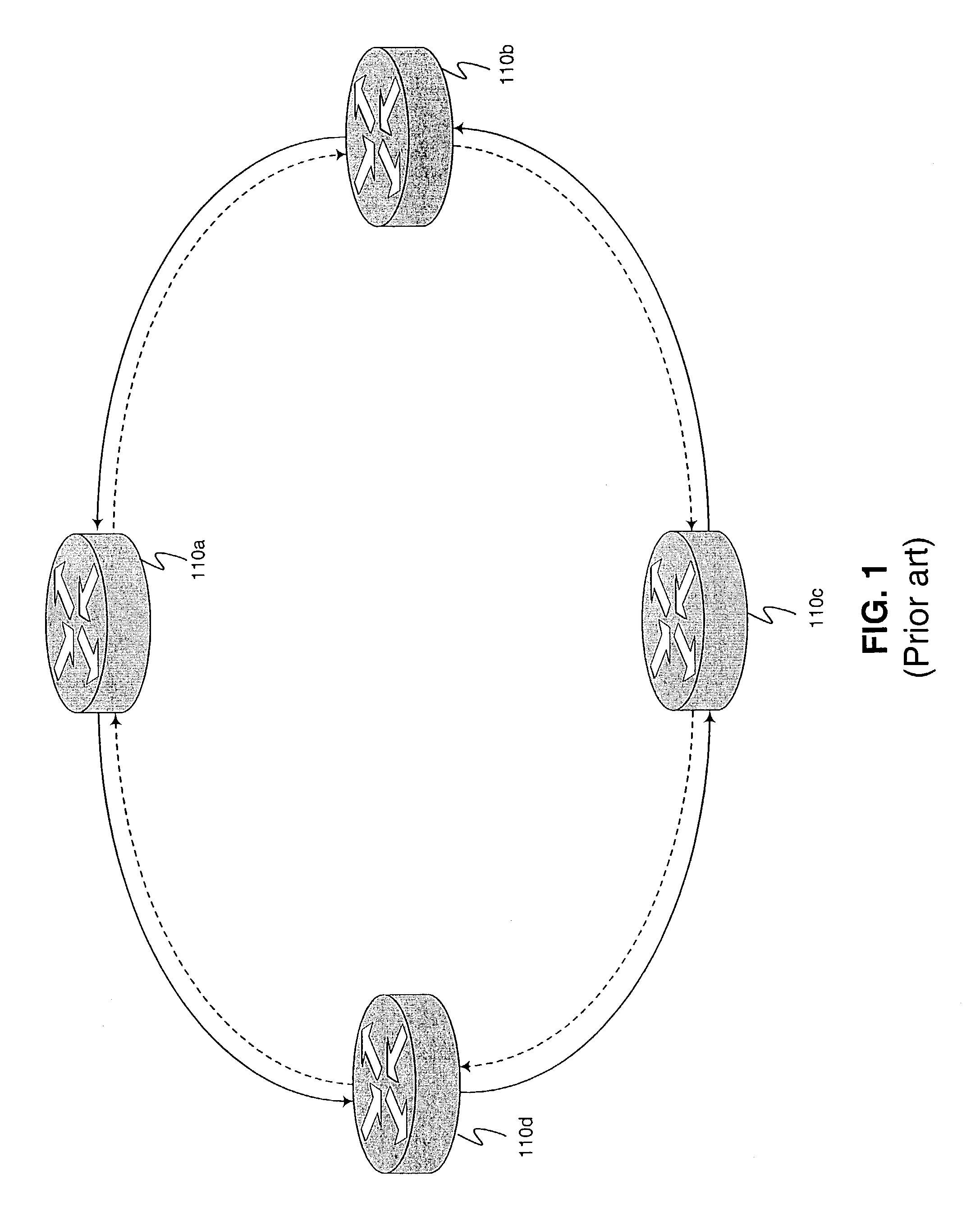Method and system for allocating traffic demands in a ring network
a traffic demand and ring topology technology, applied in the field of communication network management, can solve the problems of increasing data traffic demand, challenging the capacity limits of these existing transport infrastructures, and affecting the efficiency of sonet-based networks in utilizing available bandwidth
- Summary
- Abstract
- Description
- Claims
- Application Information
AI Technical Summary
Benefits of technology
Problems solved by technology
Method used
Image
Examples
Embodiment Construction
[0018]Reference will now be made in detail to the present exemplary embodiments of the invention, examples of which are illustrated in the accompanying drawings. Wherever possible, the same reference numbers will be used throughout the drawings to refer to the same or like parts.
[0019]RPR or “Resilient Packet Ring” is a network architecture and technology for transmitting packet-based traffic. It provides features typically associated with SONET (efficient support for ring topology and fast recovery from fiber cuts and link failures) while at the same time, providing data efficiency, simplicity, and cost advantages that are typical to Ethernet. An example of an RPR network is described in the “IEEE 802.17 RPR Working Group Draft Standard v. 1.0,” which is incorporated by reference.
[0020]Generally described, RPR comprises a Media Access Control (MAC) data link layer protocol optimized for transmission on resilient rings used in local area networks (LANs), wide area networks (WANs), a...
PUM
 Login to View More
Login to View More Abstract
Description
Claims
Application Information
 Login to View More
Login to View More - R&D
- Intellectual Property
- Life Sciences
- Materials
- Tech Scout
- Unparalleled Data Quality
- Higher Quality Content
- 60% Fewer Hallucinations
Browse by: Latest US Patents, China's latest patents, Technical Efficacy Thesaurus, Application Domain, Technology Topic, Popular Technical Reports.
© 2025 PatSnap. All rights reserved.Legal|Privacy policy|Modern Slavery Act Transparency Statement|Sitemap|About US| Contact US: help@patsnap.com



